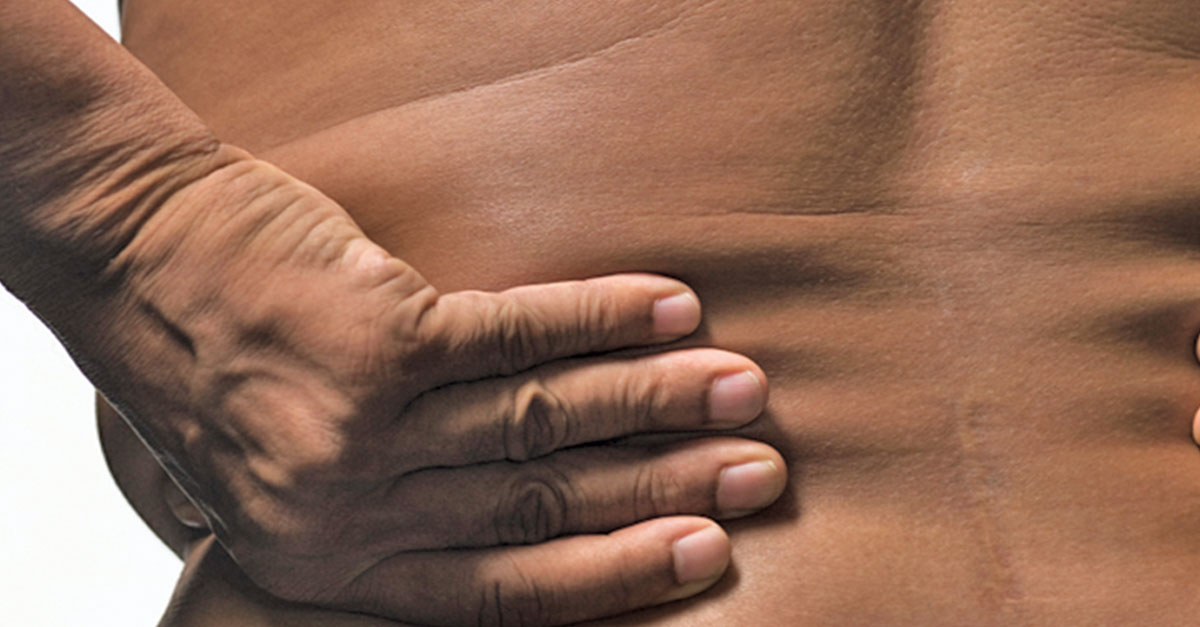Spinal Stenosis Pain Can Often Be Soothed with Natural Treatments
It may start with discomfort or pain that arises in your legs when you are walking or standing. Much to your relief, the minute you sit down, the pain goes away. Except when you resume walking or standing for more than a few minutes, darn it all, there it is again… and again… and again. This is a typical pattern that announces the onset of spinal stenosis, a narrowing that compresses the nerves within one or more areas in the spine. Estimates are that at least 400,000 Americans, mostly over age 60, have lumbar spinal stenosis.
Rheumatologist David G. Borenstein, MD, clinical professor of medicine, The George Washington University Medical Center, has been treating spinal stenosis for many years. He told me that it usually results from osteoarthritis in the spine. Because the problem is nearly always associated with age, Dr. Borenstein says we are facing an epidemic of the problem as boomers rack up yet more birthdays.
WHERE DOES IT COME FROM?
Initially spinal stenosis can seem mysterious, a pain that appears out of nowhere and vanishes just as unpredictably, but then reappears and worsens as time goes on. Furthermore, the pain is rarely felt unless the person is in an erect position, standing or walking. Dr. Borenstein explained this is likely because standing adds further pressure and reduces blood flow to the already-compressed spinal nerves. Flexing forward is a sure way to relieve the discomfort, since doing so reduces pressure on the nerve.
Spinal stenosis is a slow, progressive disorder, but fortunately most people tend to level off at a degree of severity — i.e., they can walk a certain number of blocks or stand a particular length of time before the pain starts.
Dr. Borenstein advises seeing a doctor if you have this kind of pain for several weeks or a month. Diagnosis will come through your description of the problem, a physical exam, X-rays to determine if there are degenerative changes in the spine, and finally if necessary, an MRI or CT scan for confirmation.
EASE THE PAIN
While there is no cure for spinal stenosis, there are a number of ways you can help ease the pain associated with it. These include:
- Maintain a normal weight. Dr. Borenstein said that it’s not clear whether obesity contributes to the problem, but it is for certain that heavy people with it have a much harder time getting around.
- Choose the right exercise. To lose or maintain weight, choose exercises that put you in a forward flexed position — such as riding a stationary bike rather than jogging. Swimming is also a good choice.
- Strengthen core muscles. Doing so will help keep strain and fatigue at bay, enabling you to maintain the correct posture more comfortably. Strong thighs and buttocks help too.
- Try physical therapy. For instance, a physical therapist can teach you to stand with your pelvis tilted forward… this flattens the back and decompresses the affected area of your spine, which releases compression and reduces pain.
- Consider anti-inflammatory medications. Inflammation swells the soft tissue around the spinal cord, reducing space for the nerves and cerebrospinal fluid. Dr. Borenstein advises judicial use of nonsteroidal anti-inflammatory drugs such as ibuprofen and other medications, but make sure you discuss this with your doctor — these are not without side effects. More powerful pharmaceutical drugs are also available if necessary.
Adding to Dr. Bornstein’s advice, Daily Health News contributing editor Andrew L. Rubman, ND, told me that he advises patients with spinal stenosis that following an anti-inflammatory diet should become a way of life. Salmon, herring and other fatty fish provide omega-3 fatty acids, as does high quality fish oil… and ginger is an excellent anti-inflammatory, as well. Other helpful strategies include avoiding fried food, eating fresh ripe fruits and vegetables and perhaps taking anti-inflammatory supplements, such as curcumin, bromelain, nattokinase, serrapeptase and papain.
SURGERY
For people whose spinal stenosis pain becomes severe, there are several procedures or surgeries that can address the problem.
- First in line are epidural corticosteroid shots placed directly into the area to shrink the tissues. The effect is instantly soothing but only lasts for weeks or months. Note: Steroids have serious side effects and use of them is restricted to no more than three shots every six months.
- A minimally invasive surgical procedure called the X-Stop Spacer involves opening the space around the compressed nerve with an implant. However, this procedure doesn’t always bring relief.
- Other surgeries for spinal stenosis include foraminotomy, in which the surgeon whittles bones in the immediate area to enlarge the hole in the spine, and decompression laminectomy, in which a piece of the spine is removed to open up the area. These surgeries are more invasive and therefore require more recovery time.
In addition to keeping weight down, eating a healthy diet and remaining active, Dr. Borenstein emphasizes this important preventive strategy — don’t smoke. Degeneration of the spine starts early in life and smoking is thought to contribute by causing the discs to wear out faster.


